You are here
The oldest sanctuary in Arabia is discovered: a dugong bone mound on Akab Island
The French archaeological mission to the United Arab Emirates, including CNRS and INRAP searchers, and the museum of the Umm al-Quwain Emirate (UAE) have recently discovered the oldest sanctuary in Arabia (3500-3200 BC), as well as the oldest known ceremonial site dedicated to a very particular marine mammal, the dugong (Dugong dugon).
These results have just been published in the international review Antiquity.
Located in the United Arab Emirates, near the Strait of Hormuz, the Akab sanctuary (3500 BC) today provides us with the first evidence of the rituals practised by the prehistoric coastal societies of the Gulf.
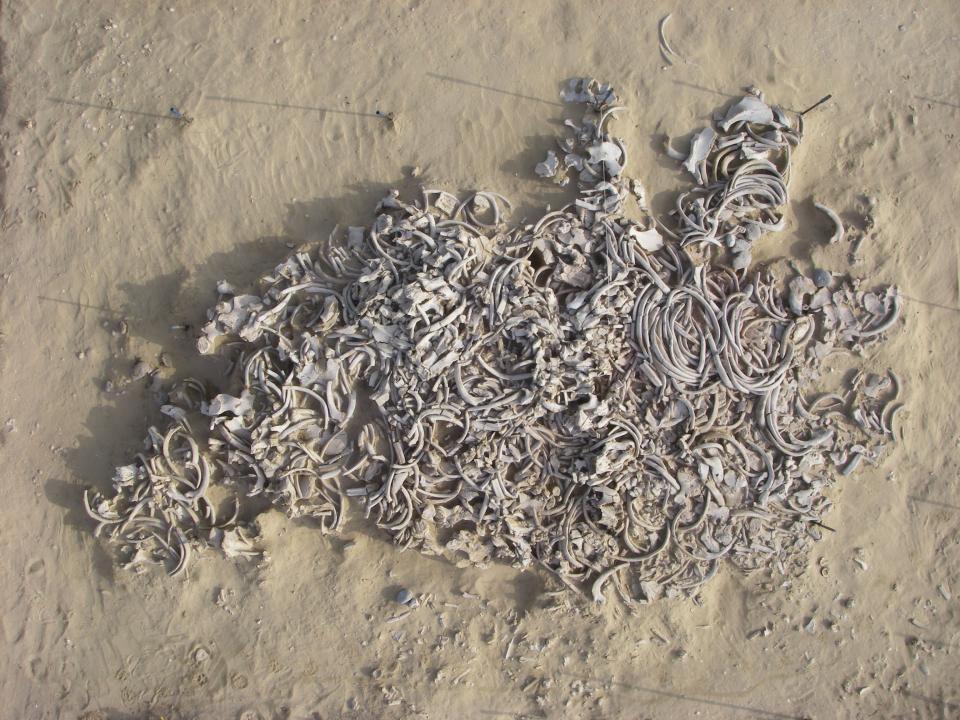
Akab, a fishermen’s village between 4700 and 4100 BC
A dugong bone mound (3500-3200 BC)
Test excavations were made in "dugong mound” of Akab in the 1990’s and it was interpreted as a sea cow butchering site.
The excavation was resumed between 2006 and 2009 by a new team of prehistorians and faunal experts of the French mission. This work has shown that this is not an unorganized accumulation of bones, but an intentionally structured one whose construction was accomplished in stages. A 14C dating realised directly on a dugong bone attributes it to the second half of the fourth millennium (5140 ± 55 BP. 3568-3116 BC). This complex construction consists of an ovoid platform extending to approximately 10 m2 and 40 cm in height. It contains the remains of at least forty dugongs. The top level was organised with two rows of skulls directed toward the east and a third row of skulls with the same orientation on the northern edge of the mound.
All of the skulls were carefully wedged into place with the premaxilla deeply embedded into the lower part of the structure and wedges of ribs, sometimes doubled or even tripled, placed all around them. Bundles of rips were deposited just in front of the first row of skulls to the east.
The lower level of the platform was almost entirely impregnated with an ochre solution that reddened the bones and the natural sediment. This level is characterised by dugong mandibles laid flat, and it some areas, piled several high.
Juveniles, including very young dugongs, are well represented in the mound. We also observe that no animal was deposited whole in the structure, or even a large part of an animal. Moreover, certain anatomical parts, such as the ribs, vertebrae or limbs, are under-represented, which is evidence of intentional selection. The deposition of portions of freshly killed animals is verified by the presence of limbs in anatomical connexion. Today, the bones present the stigmata of a long exposition to sun and wind.
Archaeological remains in the sanctuary
Akab, a marine sanctuary
All of these elements indicate that the organization and use of the Akab monument responded to precise rules during the fourth millennium. The ensemble contributes to the spectacular and ritualised display of a large marine mammal, and we can only be astonished by the fact that at Akab the dugong skulls are directed fully eastward, as are the deceased in certain Neolithic necropolises, such as Jebel al-Buhais 18 (Sharjah Emirate, UAE). This display is also reminiscent of that of the green turtle (Chelonia mydas) in the necropolis of Ra’s al-Hamra 5 (Sultanate of Oman), which is contemporary with the Akab monument. Here, the animal skulls were placed near the face of the deceased or on the tomb and elements of the shell were placed on the body.
The Akab monument is unique in the Middle-East has no parallel in the Neolithic in other parts of the world. The only comparable constructions are those on the Australian coasts of the Torres Strait in the ceremonial sites known as kod sites, but the dates of these sites are much more recent (fourteenth-twentieth century AD). As at Akab, these constructions contained the remains of dugongs (from a few to several hundred) among which objects were deposited (individual ornaments, various tools and imported objects), as well as terrestrial and marine fauna. In this country, the dugong is an animal of special status, which was, and still is, the subject of propitiatory rites concerning the preparations for its capture, the transport of its remains to land, its dismemberment and/or its consumption. But these rites are related to totemic factors as well as many fishing clans have marine totems, such as shark, marine turtle and the dugong.
The analogy is so strong between the Akab monument and the Australian dugong constructions that we believe the link with fishing rites is highly probable. We can deduct that the Akab monument, with its preconceived organisation and construction that was meant to last, was a sanctuary.
Was it exclusively dedicated to rites related to the dugong, whose capture was certainly not without risk, or with sea hunting/fishing in general? We have no elements to respond to this question.
Did the Neolithic fishermen of Akab belong to a society in which not only beliefs and rites were related to animals, but which was also founded on the totem-clan pair, and thus on exogamy? Nothing allows us to affirm this idea. What we observe is the proximity of coastal populations that were separated by several hundreds of kilometres, such as those of Akab and Ra’s al-Hamra, but which nonetheless shared many elements of their material culture and technologies, as well as practices of a spiritual order with certain marine animals.
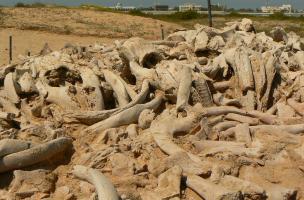
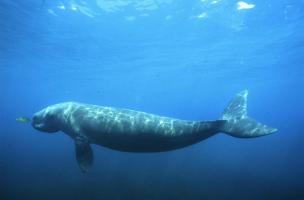


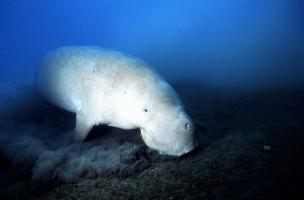

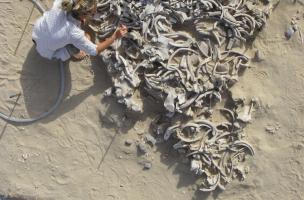

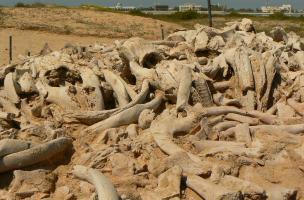
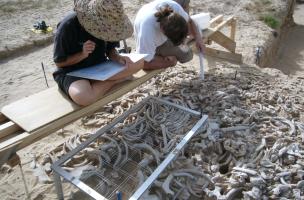
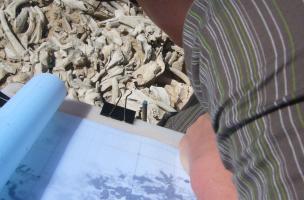
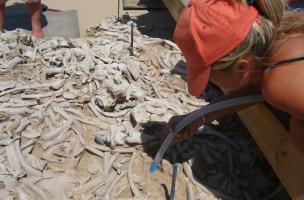
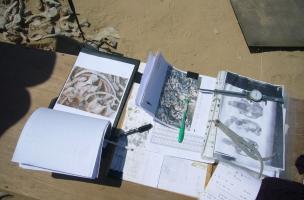
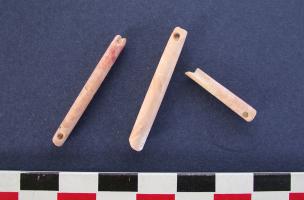

Created in 1999, the French archaeological mission to the United Arab Emirates is funded by the sub-direction of Human and Social Sciences and Archaeology of the Ministry of Foreign and European Affairs.
It has conducted several excavations on the Neolithic period and Bronze and Iron Ages in various Emirates (Abu Dhabi, Sharjah, Fujairah, Umm al-Quwain). In Akab, the mission is composed of researchers affiliated with the CNRS, Inrap and the Universities of Paris I, Edinburgh (Great-Britain), Ravenna (Italy) and ADACH (Abu Dhabi).
Sophie Méry (CNRS)
Directrice de la Mission archéologique française aux E.A.U
umr 7041 du cnrs, Nanterre.
//sophie.mery [at] mae.u-paris10.fr
Vincent Charpentier (Inrap)
umr 7041, Nanterre.
01 40 08 80 16 / 06 85 43 28 87
//vincent.charpentier [at] mae.u-paris10.fr

